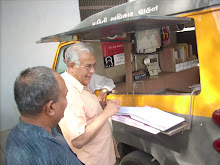Indian Express: New Delhi: Wednesday,
30 October 2024.
The Right to Information (RTI) Act has been seen as a powerful means of empowering citizens, and promoting transparency and accountability of public officials. But what led to the establishment of the RTI Act in 2005, and how has it influenced freedom of information in India?
An amendment to a section in the RTI Act proposed by the Digital Personal Data Protection Act 2023 (DPDPA) restricting access to personal information about public officials has drawn criticism from the opposition, civil society groups and from within as well.
The Right to Information (RTI) Act, which came into force in October 2005, was seen as a significant development towards freedom of information. It gave ordinary citizens the right to request information from government bodies, making authorities accountable for their actions and decisions. As a result, RTI is seen as a tool for citizens’ empowerment, promoting democratic participation, and improving the transparency and accountability of public officials.
But how did the RTI Act come into existence? How was it drafted and what are the challenges towards its effective implementation?
Genesis of RTI
The roots of the RTI Act lie in a grassroots movement in rural Rajasthan. In the 1980s, civil society organisations and villagers in Devdungri, a small village in Rajsamand district, led struggles to address issues such as fair wages, accountability from government officials, and access to information about local employment records, including muster rolls, to ensure fair compensation.
Their struggle gradually transformed into a movement demanding a law guaranteeing citizens’ right to access information. A significant part of this early movement involved the innovative use of Jan Sunwais or public hearings, where people gathered to scrutinize and discuss government records.
Public hearings played an important role in facilitating the demand for RTI, while the support from key figures, including activists Aruna Roy, Nikhil Dey, Shekhar Singh, and Anshi, was equally crucial. They were later joined by Harsh Mander, who also became an advocate for this cause.
The making of RTI
The first draft provisions for RTI were prepared in 1993 by the Consumer Education and Research Council (CERC). It was followed by the Press Council’s draft, which had some of the significant features that would later become central to the RTI Act.
In 1997, the Government of India formed a Working Group under consumer activist H.D. Shourie to prepare a Freedom of Information Bill. The bill, however, went through extensive changes, leading to the Freedom of Information Act of 2002, passed during the NDA government.
When the United Progressive Alliance (UPA) government came into power, it established the National Advisory Council (NAC) to oversee the Common Minimum Programme, which prioritised the right to information. The NAC, alongside civil society organisations, worked extensively to revise the 2002 law, resulting in a more robust RTI framework.
The final draft of the RTI Act was approved and passed with 150 amendments, replacing the Freedom of Information Act with a more comprehensive law in 2005. Officially coming into force on October 12, 2005, the RTI Act applies across all levels of government, including central, state, and local bodies.
Challenges
One of the biggest impediments to the effective implementation of the RTI Act is the Official Secrets Act (OSA) of 1923. Enacted during British rule, the OSA was designed to maintain the confidentiality of official information by making it an offence to share and disseminate any classified information.
The OSA is a replica of the British Official Secrets Act of 1911, which has since then undergone substantial reforms. However, India’s version remains largely unchanged except for some minor amendments made in 1967. It led to concerns over the OSA’s broad scope obstructing the RTI Act’s goal of enhancing transparency and accountability within government operations.
For example, Section 8(2) of the RTI Act allows for information to be disclosed if the public interest in releasing it is greater than the potential harm to protected interests. Similarly, Section 22 of the RTI Act, stating that the RTI Act should prevail when inconsistencies arise, underpins the Act’s goal of promoting openness and accountability in government functions.
Yet, Section 5 of the OSA still poses challenges to the effective implementation of the RTI Act. This is partly because the OSA’s broad terms enable bureaucratic control over information, effectively allowing officials to withhold disclosure under the guise of confidentiality. Other similar laws, such as Sections 123 and 124 of the Indian Evidence Act (1872) and Section 9 of the All India Services Conduct Rules (1968), also grant powers that can restrict transparency.
Thus, while the RTI Act marks a step toward democratic empowerment, older secrecy laws like the OSA still reinforce bureaucratic control, making it challenging to shift fully to a culture of openness in government.
RTI Amendments
In 2006, there were attempts to amend the RTI Act by removing “file notings” (internal notes by government officials on files), which couldn’t be materialised due to public protests. But the 2019 amendments specifically altered the terms, tenure, and emoluments of the Chief Information Commissioner (CIC) and Information Commissioners (ICs).
The original Act placed CIC and ICs on parity with equivalent ranks in the Election Commission of India, an autonomous constitutional authority where commissioners enjoy a fixed tenure of five years, and could only be removed under specific conditions.
The 2019 Amendment removes equivalence with the Election Commission, and gave the government control over the tenure, emoluments and terms of appointment of CIC and ICs, which some view as reducing their independence.
Moreover, the amendment proposed by the data protection law has further been seen as possibly weakening the RTI Act.
Post Read Questions
The Right to Information (RTI) Act has been seen as a powerful means of empowering citizens, and promoting transparency and accountability of public officials. But what led to the establishment of the RTI Act in 2005, and how has it influenced freedom of information in India?
An amendment to a section in the RTI Act proposed by the Digital Personal Data Protection Act 2023 (DPDPA) restricting access to personal information about public officials has drawn criticism from the opposition, civil society groups and from within as well.
The Right to Information (RTI) Act, which came into force in October 2005, was seen as a significant development towards freedom of information. It gave ordinary citizens the right to request information from government bodies, making authorities accountable for their actions and decisions. As a result, RTI is seen as a tool for citizens’ empowerment, promoting democratic participation, and improving the transparency and accountability of public officials.
But how did the RTI Act come into existence? How was it drafted and what are the challenges towards its effective implementation?
Genesis of RTI
The roots of the RTI Act lie in a grassroots movement in rural Rajasthan. In the 1980s, civil society organisations and villagers in Devdungri, a small village in Rajsamand district, led struggles to address issues such as fair wages, accountability from government officials, and access to information about local employment records, including muster rolls, to ensure fair compensation.
Their struggle gradually transformed into a movement demanding a law guaranteeing citizens’ right to access information. A significant part of this early movement involved the innovative use of Jan Sunwais or public hearings, where people gathered to scrutinize and discuss government records.
Public hearings played an important role in facilitating the demand for RTI, while the support from key figures, including activists Aruna Roy, Nikhil Dey, Shekhar Singh, and Anshi, was equally crucial. They were later joined by Harsh Mander, who also became an advocate for this cause.
The making of RTI
The first draft provisions for RTI were prepared in 1993 by the Consumer Education and Research Council (CERC). It was followed by the Press Council’s draft, which had some of the significant features that would later become central to the RTI Act.
In 1997, the Government of India formed a Working Group under consumer activist H.D. Shourie to prepare a Freedom of Information Bill. The bill, however, went through extensive changes, leading to the Freedom of Information Act of 2002, passed during the NDA government.
When the United Progressive Alliance (UPA) government came into power, it established the National Advisory Council (NAC) to oversee the Common Minimum Programme, which prioritised the right to information. The NAC, alongside civil society organisations, worked extensively to revise the 2002 law, resulting in a more robust RTI framework.
The final draft of the RTI Act was approved and passed with 150 amendments, replacing the Freedom of Information Act with a more comprehensive law in 2005. Officially coming into force on October 12, 2005, the RTI Act applies across all levels of government, including central, state, and local bodies.
Challenges
One of the biggest impediments to the effective implementation of the RTI Act is the Official Secrets Act (OSA) of 1923. Enacted during British rule, the OSA was designed to maintain the confidentiality of official information by making it an offence to share and disseminate any classified information.
The OSA is a replica of the British Official Secrets Act of 1911, which has since then undergone substantial reforms. However, India’s version remains largely unchanged except for some minor amendments made in 1967. It led to concerns over the OSA’s broad scope obstructing the RTI Act’s goal of enhancing transparency and accountability within government operations.
For example, Section 8(2) of the RTI Act allows for information to be disclosed if the public interest in releasing it is greater than the potential harm to protected interests. Similarly, Section 22 of the RTI Act, stating that the RTI Act should prevail when inconsistencies arise, underpins the Act’s goal of promoting openness and accountability in government functions.
Yet, Section 5 of the OSA still poses challenges to the effective implementation of the RTI Act. This is partly because the OSA’s broad terms enable bureaucratic control over information, effectively allowing officials to withhold disclosure under the guise of confidentiality. Other similar laws, such as Sections 123 and 124 of the Indian Evidence Act (1872) and Section 9 of the All India Services Conduct Rules (1968), also grant powers that can restrict transparency.
Thus, while the RTI Act marks a step toward democratic empowerment, older secrecy laws like the OSA still reinforce bureaucratic control, making it challenging to shift fully to a culture of openness in government.
RTI Amendments
In 2006, there were attempts to amend the RTI Act by removing “file notings” (internal notes by government officials on files), which couldn’t be materialised due to public protests. But the 2019 amendments specifically altered the terms, tenure, and emoluments of the Chief Information Commissioner (CIC) and Information Commissioners (ICs).
The original Act placed CIC and ICs on parity with equivalent ranks in the Election Commission of India, an autonomous constitutional authority where commissioners enjoy a fixed tenure of five years, and could only be removed under specific conditions.
The 2019 Amendment removes equivalence with the Election Commission, and gave the government control over the tenure, emoluments and terms of appointment of CIC and ICs, which some view as reducing their independence.
Moreover, the amendment proposed by the data protection law has further been seen as possibly weakening the RTI Act.
Post Read Questions
- What led to the establishment of the RTI Act in 2005, and how has it influenced freedom of information in India?
- What was the intended purpose of aligning the tenure and terms of the Chief Information Commissioner (CIC) and Information Commissioners (ICs) with those of the Election Commission in the original RTI Act?
- How might the amendment proposed by the data protection law further affect the RTI Act’s effectiveness, particularly in terms of information disclosure?
- What challenges or limitations does the RTI Act face in ensuring full transparency and accountability?















































































